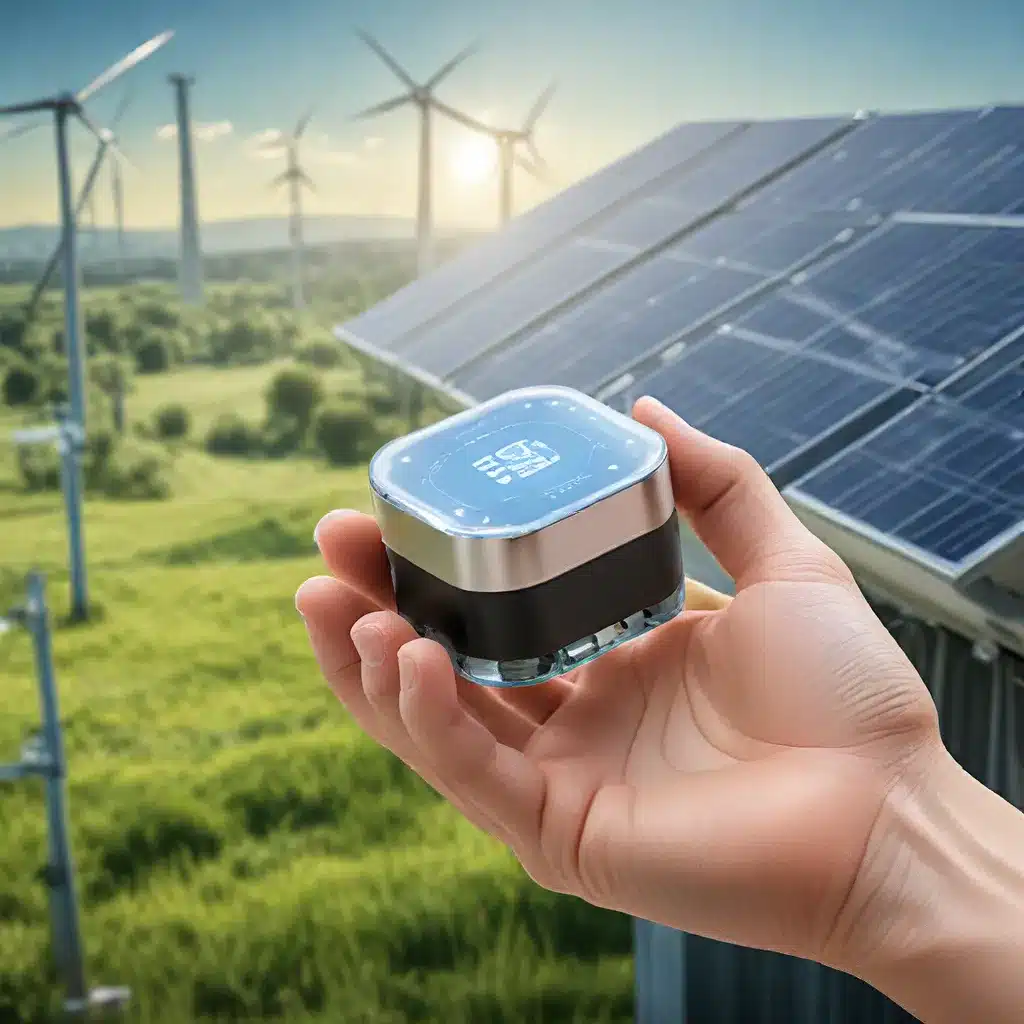
Embracing the Power of Energy Harvesting for IoT Dominance
In the rapidly evolving world of the Internet of Things (IoT), the demand for energy-efficient and self-sustaining sensor networks has become increasingly paramount. As the number of connected devices continues to soar, traditional power sources, such as batteries, struggle to keep up with the insatiable appetite for power. However, a revolutionary solution is emerging that could unlock the true potential of IoT – energy harvesting.
Energy harvesting, the process of capturing and converting ambient energy into usable electrical power, has the potential to transform the landscape of sensor networks and IoT applications. By freeing devices from the constraints of wired power or finite battery life, energy harvesting opens up a world of possibilities for ubiquitous, maintenance-free sensor deployments.
Sensor Networks are at the heart of IoT, serving as the eyes and ears of this interconnected ecosystem. These sensor nodes, strategically placed in diverse environments, collect and transmit critical data that powers intelligent decision-making, automation, and optimization across a wide range of industries. The ability to harness energy from the surroundings is a game-changer, empowering these sensor nodes to operate indefinitely without the need for manual battery replacements or external power sources.
Unlocking the Potential of Energy Harvesting Technologies
At the forefront of this energy harvesting revolution are innovative technologies that are transforming the way we power IoT devices. From piezoelectric materials that convert mechanical vibrations into electricity to thermoelectric generators that harness temperature gradients, these advanced solutions are harnessing the abundant and often untapped energy all around us.
One particularly exciting development is the partnership between Energous and Wiliot, two leading companies in the IoT and energy harvesting space. Through their collaboration, they aim to enable the next generation of IoT tags and sensors, powered by Energous’ wireless power transfer technology and Wiliot’s IoT pixel platform. This synergistic approach promises to revolutionize the way IoT devices are powered, freeing them from the constraints of traditional batteries and wired power.
Another groundbreaking development is the dual energy harvesting device showcased in a recent study. This innovative device is capable of harvesting both thermal and kinetic energy, making it an ideal solution for powering wireless medical implants and other IoT applications that require a reliable and sustainable power source.
Empowering IoT with Energy-Efficient Sensor Networks
The integration of energy harvesting technologies into IoT sensor networks is not only a matter of convenience but also a critical step towards achieving true sustainability and scalability. By eliminating the need for batteries or wired power, sensor nodes can be deployed in remote or hard-to-reach locations, expanding the reach and versatility of IoT applications.
Researchers are also exploring advanced energy harvesting techniques, such as hybrid systems that combine multiple energy sources, to maximize the power output and reliability of IoT sensor networks. These innovative approaches are paving the way for autonomous, self-sustaining sensor deployments that can adapt to changing environmental conditions and continue to reliably gather and transmit critical data.
Moreover, the energy-efficient nature of these energy-harvesting-powered sensor networks has far-reaching implications. By reducing the overall energy consumption of IoT systems, they contribute to a more sustainable and environmentally friendly future, aligning with the growing global focus on green technology and climate-conscious solutions.
Securing the IoT Ecosystem through Energy-Aware Designs
As the IoT landscape continues to evolve, security remains a critical concern. The energy-efficient nature of energy-harvesting-powered sensor networks introduces unique challenges and opportunities in this domain.
Traditional security protocols, designed for battery-powered devices, may not be optimized for the energy-constrained environments of energy-harvesting-powered sensor nodes. Researchers are exploring energy-aware security techniques, such as lightweight cryptographic algorithms and dynamic key management strategies, to ensure the integrity and confidentiality of IoT data without compromising the limited energy resources of these sensor nodes.
Network topology also plays a crucial role in the security and energy efficiency of IoT systems. Distributed architectures, where sensor nodes communicate directly with a central hub, offer advantages in terms of data aggregation and processing. However, mesh topologies, where nodes relay data to one another, can provide improved resilience and redundancy in the face of device failures or security breaches.
By carefully integrating energy harvesting, security, and network design, IoT stakeholders can build robust, energy-efficient, and secure sensor networks that unlock the full potential of this transformative technology.
Shaping the Future of IoT with Energy Harvesting
As the IoT landscape continues to evolve, the integration of energy harvesting technologies will be a defining factor in the success and widespread adoption of IoT applications. By freeing sensor nodes from the constraints of traditional power sources, energy harvesting empowers IoT systems to scale, adapt, and thrive in diverse environments, unlocking new possibilities for intelligent automation, real-time monitoring, and data-driven decision-making.
The synergistic relationship between energy harvesting and IoT is poised to reshape entire industries, from smart cities and sustainable agriculture to healthcare and industrial automation. As these two transformative technologies converge, we can expect to witness the emergence of a more intelligent, efficient, and self-sustaining IoT ecosystem – one that redefines the boundaries of what’s possible in the era of ubiquitous connectivity and pervasive sensing.
By embracing the power of energy harvesting, the IoT community can unlock a future where sensor networks are truly autonomous, resilient, and energy-efficient, powering the next generation of intelligent and sustainable solutions. The possibilities are limitless, and the future of IoT has never been brighter.